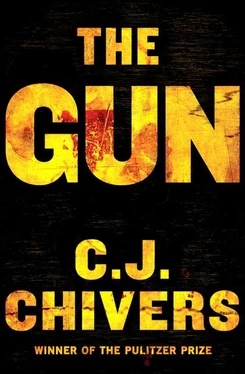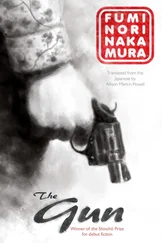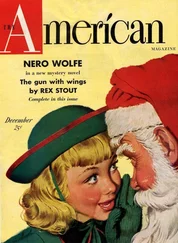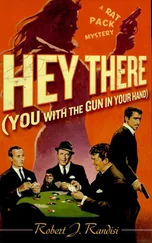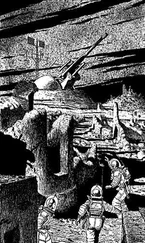The technician visited the battalion a month later. He confirmed the corroded condition of the M-16s. And he did as he was told. In his report back to the United States, he noted that he had furnished the Marines with the new literature and “intensive training on proper cleaning of weapons is planned.” His report struck the official tone. It blamed the Marines for not keeping their weapons ready. There was no mention of what was known in the Pentagon and at Colt’s: the tendency of the rifles to corrode, the need for a new buffer, the problems with failure to extract. Headquarters had spoken. Though the army knew the M-16 had technical problems that needed technical solutions, combat units were blamed for their rifle’s worrisome traits. The troops entered the monsoon season of 1967 with rifles prone to fail, and a bureaucracy ready to scold them when they did.
The decisions to blame the infantry, and to keep the problems out of public discourse while issuing more rifles, were untenable. By early 1967, the sense that something was awry had reached Washington. Angry troops were sending home letters. Journalists were hearing complaints. Reports of the AK-47’s reliability were also providing an obvious contrast. The Washington Daily News posed the question. How did the world’s wealthiest nation lag behind communist countries in its most basic fighting tool?
In the past two years, with amazing competence and thoroness [sic], the communists have replaced their earlier inferior weapons with the rapid firing AK-47 automatic assault rifle of Soviet design and Red Chinese manufacture…. The AK-47 is the regular weapon for North Vietnam’s army and main force Viet Cong troops. It is as good as the new M-16 rifle U.S. troops use. It is less liable to jam and therefore, in the opinion of some experts, may even be better. Man for man, the regular communist soldier is a firepower match for his American adversary—and is far more powerful than his South Vietnamese foe…. Why is it that North Vietnam, with aid from its Chinese ally, could foresee the need and meet it, despite all sorts of obstacles? Why is it that the U.S., with its $25 billion to $30 billion yearly war budget, superlative defense plants, and reputed logistic superiority could not keep pace? 56
No one in the United States government could adequately answer that question. The chosen line—with roots reaching through General Wheeler’s memorandum to the first 1956 technical intelligence tests—was to denigrate the AK-47 as a primitive but functional submachine gun and insist that American weapons were in another category altogether. That answer could not stand, not as long as the M-16 kept failing in fight after fight, and not while General Westmoreland was demanding more guns to improve his soldiers’ odds. So why was the AK-47 operating smoothly in Vietnam while the M-16 failed? When pressed on this, the United States military eventually floated another answer: Kalashnikov rifles had been in factory production for more than fifteen years, and these years of product improvement gave them a temporary advantage over the M-16, which had entered mass production only in 1964. There was at least a kernel of truth in this. Teams of Soviet engineers had in fact worked out many of the AK-47’s design kinks. Weak or unsatisfactory parts from the original design—the return spring, the hammer—had been identified and upgraded, sometimes multiple times. Several poor design ideas, including the receiver, had been reworked entirely. The AK-47 had been a conceptually sound weapon from the beginning. In the mid-1960s it was mature.
But the performance difference between the M-16 and AK-47 had more complicated origins than the weapons’ relative ages. The two weapons were designed in fundamentally different ways and their differences in lineage left the M-16 lacking in reliability for reasons that no manufacturing tweaks or upgrades could entirely fix. The AK-47’s main operating system had been conceived to have a loose fit and massive parts, and the resulting excess energy available in each firing cycle made it resistant to jamming. The stroke of its operating system also exceeded the distance necessary to eject a spent cartridge and feed a new one by a full 50 percent. This meant that if the system did grow sluggish and unable to move back and forth along its entire course, the motion produced would still likely be sufficient to keep the rifle clearing, feeding, and firing in a fight. Herein was a deceptive quality of the rifle: While it was externally a crude-looking weapon, at least to those who believed a rifle was supposed to have a walnut stock, no tool marks, and a high degree of polish, it was thoroughly engineered—not for aesthetics, but for reliability. The Soviet Union and China also devoted the kind of attention to the rifle’s manufacture that further contributed to smooth operation. Two steps in this respect were essential. Its bore and chamber were chromed, and it was coated with an excellent protective finish. The weapon’s workhorse operating system became more durable and reliable when manufactured to such standards and with such care. Taken together, the engineering and manufacturing choices in the Kalashnikov line—signs that the communist world’s arms-manufacturing skills were higher than its critics in the West could appreciate—enabled the Type 56 rifles handed out for jungle duty in Vietnam to resist rust and corrosion, even in the monsoon season, and even with limited cleaning. The weapons looked primitive. Looks were deceiving. The rifle had been made to be a peasant’s gun, and it worked exceptionally well in many conditions in which peasants fight.
The M-16 was the manifestation of a different set of design ideas. Its parts were made to be a snug fit, almost in the manner of a manually operated bolt-action rifle. The tight fit helped make the M-16 more accurate than the Kalashnikov, all the way out to the theoretically impressive five hundred yards. It also seemed to make it undependable. Dust, dirt, sand, rust, carbon buildup—all these things could slow or obstruct the movement of an M-16’s bolt. Further, in the quest to keep down the weapon’s weight, the main moving parts of its operating system had been made light. This added to the problems with reliability. The M-16 was easy to carry, aim, and shoot. But the small mass of its bolt gave its operation little excess potential energy; coupled with the tight fit, this was a design recipe for stoppages in harsh environments, especially if the weapons were pitted or corroding. If this were not enough, certain manufacturing standards at Colt’s through 1967 were also behind those in the Soviet Union and China. Colt’s, the sole-source provider of the M-16, neither chromed the rifles’ chambers or bores nor applied an adequate protective finish to the weapons—a pair of oversights that made the rifle prone to corrosion in Vietnam.
By spring 1967, the problems had become so widely known that Congress took an interest. On May 3, 1967, Representative L. Mendel Rivers, Democrat of South Carolina and chairman of the House Armed Services Committee, appointed Representative Richard H. Ichord, Democrat of Missouri, as head of a special subcommittee to examine “the development, production, distribution and sale of M-16 rifles.” 57Ichord steered wide of the question of which weapon was better—the M-14 or the M-16—for Vietnam or elsewhere. He left such questions to soldiers. 58If the military wanted the M-16, so be it. He wanted to know why the M-16 was malfunctioning at an unacceptably high rate.
The appointment of the subcommittee coincided with a fresh round of malfunctions of M-16s issued to the Marines, including those issued to Hotel Company, Second Battalion, Third Marines. Its experience was instructive. In February, the battalion had been given its share of M-16s during a refit period on Okinawa. The rifles had initially been popular. The troops grasped the advantages of a lightweight automatic rifle with little recoil. They knew they could now carry more rounds into each firefight. They were satisfied with how the rifles, fresh from crates, handled on firing ranges. There was concern about a shortage of cleaning gear, but otherwise everything seemed in order. The Marines were pleased. A few weeks later, Hotel Company returned to Vietnam. On a sweep of the countryside on April 26, a few M-16s jammed. But the fighting was not intensive and the operation was not stalled. The problem was attributed to unfamiliarity with the rifle, perhaps combined with inadequate cleaning, though the Marines who were cleaning the weapons thought this was not the case. 59
Читать дальше
